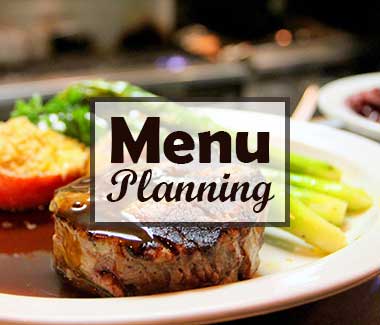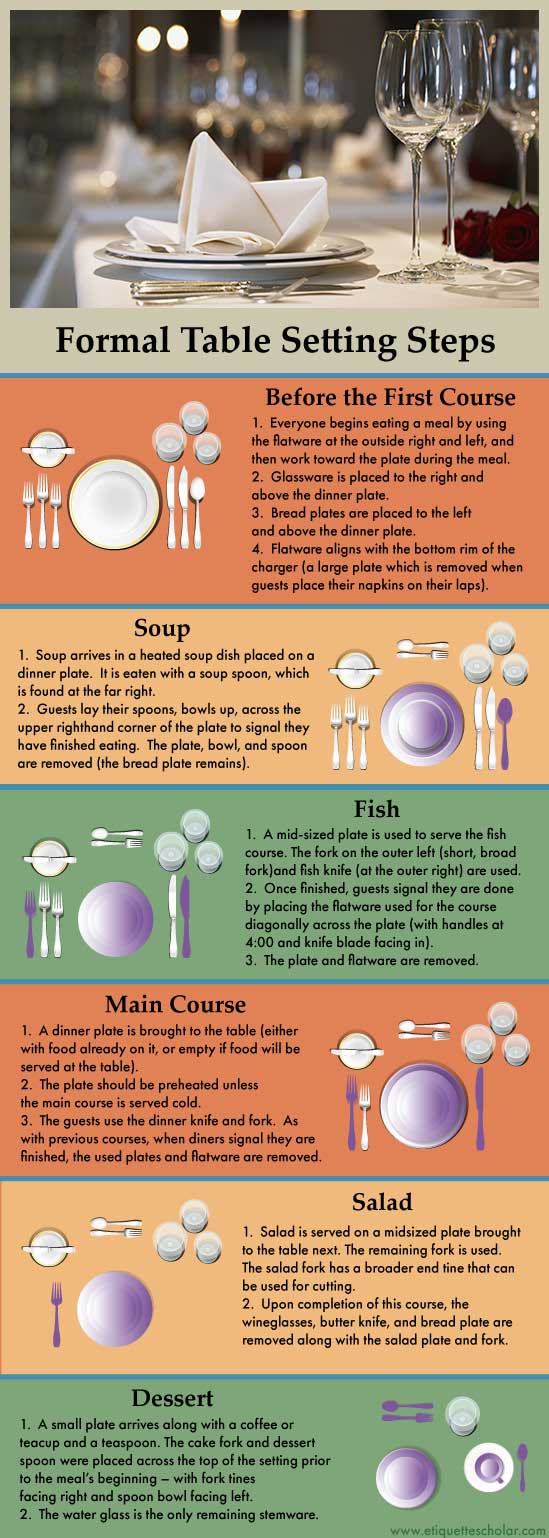The Ultimate Menu Planning Guide
An inviting menu is a balance of bland, strong, sharp and sweet tastes, with foods of different textures, temperatures, and colors.
Bland tastes, such as rice, pasta, or potatoes, contrast with strong flavors, such as meat, game, or well-seasoned vegetables, followed by the sharp taste of a vinaigrette salad, accented by a sweet dessert.
Five (5) Rules for a Balanced Menu
- A well-balanced menu does not duplicate taste. When cheese is served as an hors d'oeuvre, it is not incorporated in a dish served at the table.
- Because sweet foods dull the appetite, fruit is not served as an appetizer. The exception is grapefruit, which has a sharp taste that stimulates the palate.
- When a first course is served in a pastry shell, dessert with a crust is not appropriate.
- If creamed soup is served as a first course, creamed vegetables are not included in the main course.
- When sauce is served, it is presented only once.
From light to heavy, sour to sweet, each course is designed to meet a specific taste requirement.
Contrasting Textures. Food textures promote mastication, and the menu is designed to offer both crunchy and smooth textures.
- The crunchy texture of raw foods, such as carrots and celery, contrast with soft foods, such as cheese or soup.
- Crisp salad greens balance foods made with a smooth consistency, such as noodles in a cream sauce.
Contrasting Temperatures. The well-balanced menu includes both hot and cold temperatures.
- Because hot foods stimulate the appetite, a hot dish is always included in a menu, except in extremely hot weather, when a cold menu is less obtrusive to the palate.
- At a four-course meal a hot first course is followed by a cold second course, then a hot main course and a cold dessert.
- To maintain the right temperature, hot food is served on warm plates, and cold food on cool plates. Porcelain is naturally cold to the touch, so porcelain plates are not cooled.
- For a hot course, they are warmed in a low oven (approximately 150 to 200°F, or 66 to 93°C). Plates can also be warmed in the drying cycle of the dishwasher.
Contrasting Colors. A well-balanced menu offers a contrast of colorful foods.
The main course is the focal point of the menu, and all other foods are selected to accent the taste, temperature, texture, and colors.
Contracting Seasonings. If the cocktail hour is particularly long, the palate may become dulled by hors d'oeuvres, in which case highly seasoned food is recommended for subsequent courses.
The Seven-Course Meal
The following seven-course menu can be easily adapted to a four-course meal by eliminating an appetizer course, the cheese course, and the fruit course.
cocktail hour
To keep the palate fresh for a multi-course meal (five or more courses), do not serve appetizers with pre-dinner drinks. At a meal of four courses or less, hors d'oeuvres or canapés can be offered with cocktails.
first course
The first course at a multi-course meal is light - possibly a small serving of hot soup, served to stimulate the appetite. At a simple meal, the first course is substantial, such as a small serving of pasta.
second course
The second course is an intermediate course served to lift the palate and prepare it for the third course.
third course
Technically, the third course is the entree. Years ago, it was customary to serve three appetizer courses, the last one providing the entree (or entrance) to the main course.
- Today, the third course is often the main course, a course often listed on restaurant menus under entree.
- But when three appetizers are served at a multi-course meal, the third course is a light appetizer known as the entrée.
Fourth Course
At a formal dinner, the fourth course is often the main course, consisting of a combination of hot cooked foods, such as a roast beef surrounded by seasonal vegetables, a starch, and garnish.
Sorbet, essentially a fruited ice, is served to clear the palate at anytime during a meal. As the main course is the heaviest course, sorbet is usually presented before, during, or after the main course.
Fifth Course
To revive the palate, the fifth course is a light course of cold or cooked food, such as endive salad, asparagus with hollandaise sauce, or a cold roti, a French word for "roast," such as pate de foie gras in aspic.
Cheese
Cheese is a digestive, and an assortment of cheese is presented immediately after the service of salad or fruit.
To provide a contrast of taste, texture, and temperature, after the cheese board is presented, an assortment of warm crisp crackers is offered, along with butter served at room temperature.
Cheese is most flavorful at a room temperature - approximately 70 to 72°F (21 to 22°C).
To balance the flavors of cheese, a choice of three is offered:
- The strong taste of brie, camembert, or limburger,
- Accented by mild bel paese, muenster, edam, or gouda, and
- Moldy blue-veined cheese, such as stilton, roquefort, gorgonzola, or blue cheese.
To prevent the flavor of one cheese from invading the taste of the others, a separate knife is provided for each cheese.
To balance the textures of cheese, serve three different consistencies:
- Hard cheese, like cheddar, colby, gruyere, swiss, provolone, edam, or gouda;
- Semisoft cheese, such as port-salut, bel paese, brick, muenster, mozzarella, or blue-veined cheese; and
- Soft cheese, like brie, camembert, ricotta, or neutchatel.
Sixth Course
The sixth course is a sweet course served to cap the appetite. Dessert is a simple course.
- At a multi-course meal, a heavy menu is complimented by a light dessert with a soft texture, such as poached pears accompanied by crisp florentines and chewy macaroons.
- At a simple meal, a rich dessert caps the appetite with flair, for example, a smooth-textured ice-cream pie presented in a crust textured with chopped nuts.
Seventh Course
Whether a meal is formal or informal, when multiple courses are served, to cleanse and refresh the palate, the meal concludes with fresh fruit. For a simple menu, the meal may conclude with a rich dessert, or with fresh fruit, such as sliced pineapple or strawberry shortcake.
four-course menu
- A light first course, such as hot soup or raw fish, stimulates the palate;
- A combination course of cooked food, such as meat, starch, vegetables, and garnish comes next;
- Afterward a light course is served, usually a crisp salad tossed with a tart dressing; and
- Finally, a sweet dessert.
At a simple meal, many tastes may be combined in one dish, for example, a Mexican casserole made with meat, vegetables, and cheese is a spicy taste that accents the bland flavor of flour tortillas and is followed by a light dessert, such as delicate flan.
Related:



